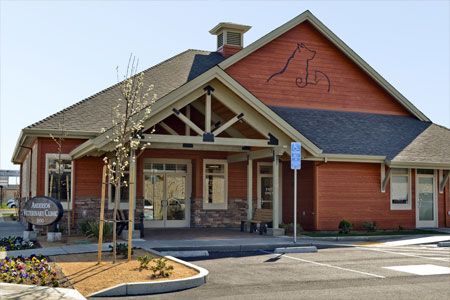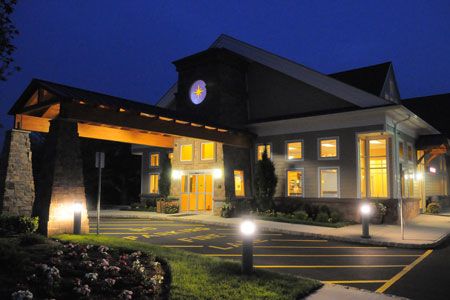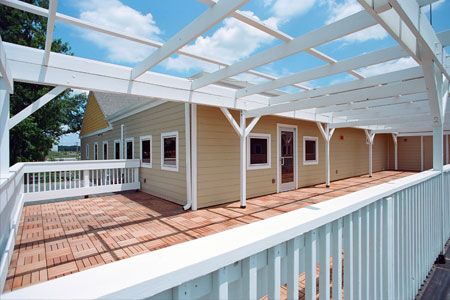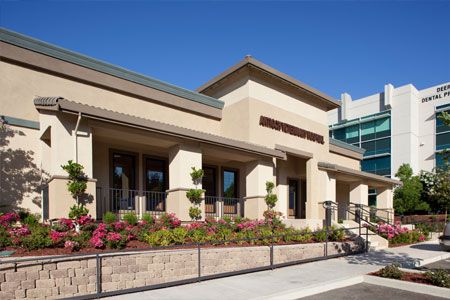16 green solutions for your veterinary practice
Three veterinary hospitals with enviromentally minded owners try out 16 ideas that could save you resources.
Next >

1. Dr. Marilee King of Anderson Veterinary Clinic (pictured above) in Anderson, Calif., wanted to use as many green products and practices as possible to reduce the carbon footprint of her facility, and she wanted to keep the costs manageable. One step: Her building team employed local contractors, subcontractors, and craftspeople. Whenever possible, materials were purchased locally.
2. A temperature-controlled passive solar radiant floor system warms the boarding area in the winter. The team can also run cold water through the floors in the summer to keep the area cooler. This saves electricity and keeps the area at a more constant temperature.
3. They used the highest R value insulation and solar reflective windows.
4. All landscaping plants and trees are native and drought resistant. They are sustained by a low-flow automated drip system. The grassy areas are recycled environmentally friendly artificial lawn.
5. A seamless epoxy resin floor and baseboard system was installed for easy cleaning and odor control, letting the team use fewer environmentally toxic cleaning products.
Photo courtesy of Anderson Veterinary Clinic

6. The NorthStar VETS building (pictured above) is located on the site of a farmhouse that was built in the late 1700s in Robbinsville, N.J. They salvaged the original hand-hewn timbers and brick from the house and reused them as an accent on the wall behind the reception desk.
7. The building features blown cellulose insulation made of recycled paper content. This type of insulation helps reduce paper that ends up in landfills and cuts down on carbon dioxide emissions.
8. This hospital team committed to sustainability by investing in a closed-loop Gertherman system for heating and cooling. Although the installation costs are high, over time the system pays for itself.
9. The flooring in the rehabilitation and pain management consultation room boasts 80 percent recycled rubber. A floor drain makes it easy to clean up after wet patients emerge from the underwater treadmill.
Photo courtesy of Hugh Loomis and Daniel Hedden Photography

10. Coming soon: A modular green roof system will be installed on the roof over the dog ward at NorthStar VETS. Light-weight trays holding low-maintenance indigenous plants will recycle rainwater back into the atmosphere rather than allowing it to run off into the sewer system. The green roof also will provide extra insulation to the dog ward, reduce the carbon footprint of the facility, and provide an oasis for staff members to enjoy on the outdoor deck. The builders installed a roof with the appropriate slope and a rubber membrane so the facility would be ready for the green roof installation.
Photo courtesy of Hugh Loomis and Daniel Hedden Photography

11. The practice team at Antioch Veterinary Hospital (pictured above) worked with the landscape architect to choose plants that use less water.
12. Exterior elements such as porches, awnings, and carefully placed windows help keep energy costs down for Antioch Veterinary Hospital.
13. The facility has a reflective white "cool" roof, which can decrease the heat load up to 40 percent.
14. Ceilings in the lobby and treatment area feature recycled ceiling tiles. The manufacturer uses post-consumer content from reclaimed ceilings.
15. The outdoor fenced yard uses synthetic "K-9 grass" for walking, exercising, and training dogs. A sprinkler system cools off the area on hot days and washes liquid waste into the built-in drainage system. The grass is cushioned for comfort, comes with anti-microbial protection, is easy to maintain and clean, and uses far less water than real grass would.
16. The practice owners increased the total number of HVAC zones from three to five. This setup facilitates odor control, increases client comfort, and adds to the green quality of the building because they can keep boarded animals comfortable at night without having to heat or cool large areas of the hospital.
Photo courtesy of Eric Rorer Photography